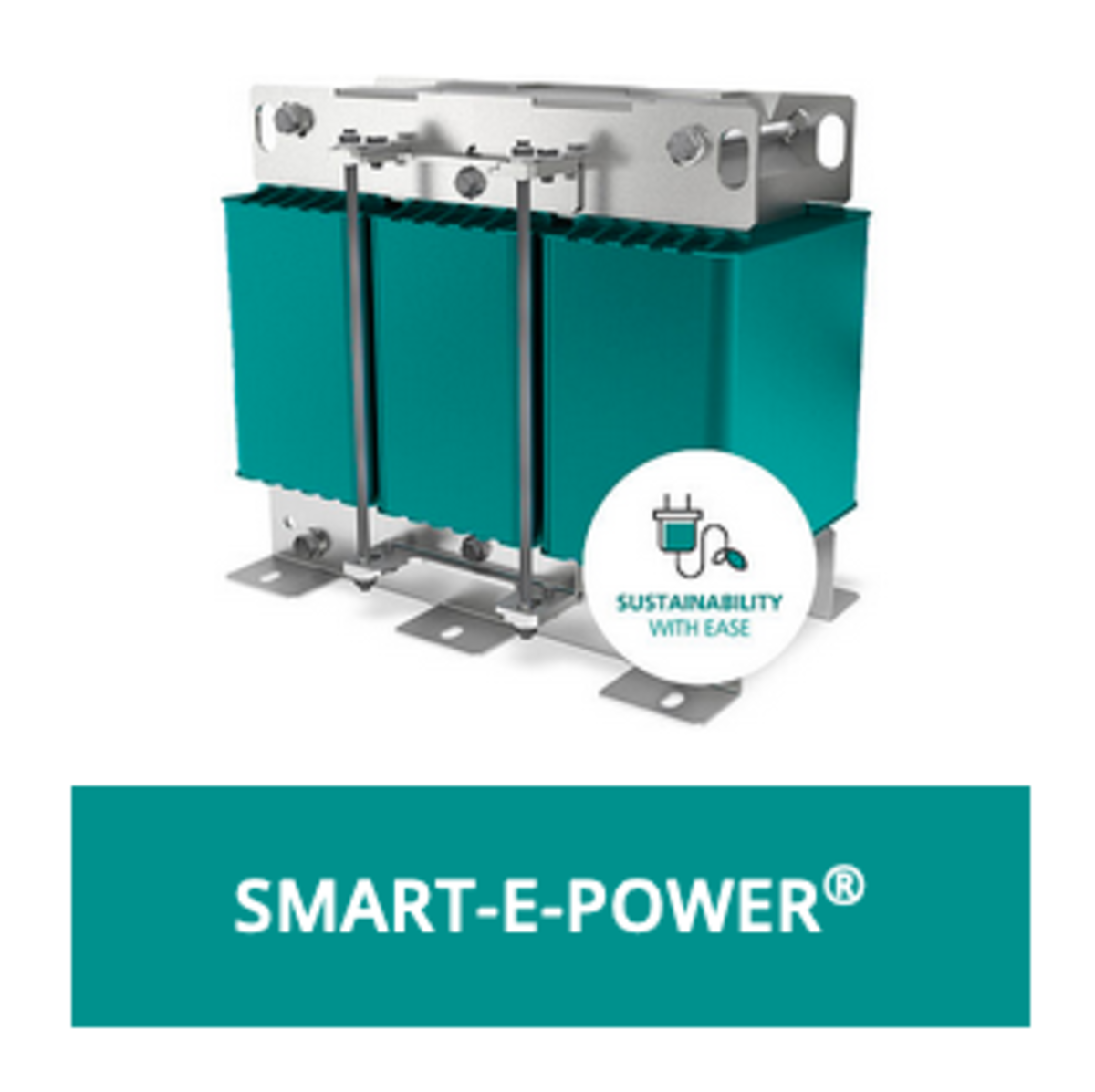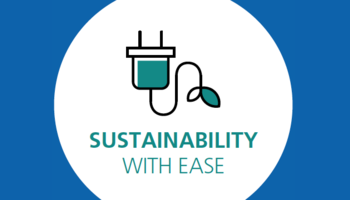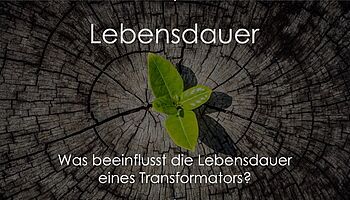
TransformerGaining Efficiency and Saving CO2
Finding the right transformer from the wide range on offer is a major challenge for many people.
Legislation, technical standards, electrical and mechanical requirements, wishes in terms of design, efficiency, space, weight, etc. are just some of the many considerations that need to be taken into account to find the optimum solution. It is important to choose the right prioritization and not to save money in the wrong place. This much can be revealed in advance: Cost-effectiveness and energy efficiency are by no means mutually exclusive.
In this blog post, you will gain an insight into the product group of sustainable winding goods and the associated visible effects.
Share
What is meant by sustainability and energy efficiency

Sustainability is a broad term that is used in various contexts. Basically, it refers to a principle of action that utilises resources in such a way that the requirements are met while still maintaining the natural regenerative capacity of the systems involved. In other words, a system can withstand long-term use without suffering damage. If we now relate this to our subject area of transformers, we are referring to the resource of energy.
According to the Swiss Federal Office of Energy, "energy-efficient" means the most economical and effective use of energy. There must be a relationship between the product (output) and the energy supplied (input). The qualitative and quantitative losses should be minimised through an optimised process.
Why the efficiency of a transformer is important
Efficiency is one of the most important characteristics of a transformer. The higher the efficiency, the fewer losses there are and the more sustainable the transformer is. Today's transformers can achieve an efficiency of 99%. This efficiency of more than 99% is so important because many transformers are in operation 24 hours a day, 7 days a week. Due to the high number of transformers in use, the aim is to achieve even higher efficiency, making installations even more sustainable and environmentally friendly.

How efficiency is calculated
In order to be able to calculate the efficiency, the power must first be considered. Ideally, the output power is equal to the input power, in which case there would be loss-free transmission. In principle, the efficiency/performance can be calculated as follows:

The deviation of 100% is due to the fact that the output power is always lower than the input power. The lower value for the output power can be explained by the losses that occur during transmission. The aim is therefore to design a transformer with the lowest possible losses. The two main types of losses are winding losses and core losses.
Losses with inductive components
By inductive components we mean transformers, chokes and filters.
All inductive components, including transformers, suffer losses in the form of thermal heating. These losses weaken the efficiency of the inductive winding goods. Despite the high efficiency of newer transformers of up to 99% in some cases, the losses of all transformers in Central and Northern Europe average around 5.7%. This energy not only has to be made available additionally, but also costs natural resources and the production of energy generates CO2, which has a negative impact on the climate.
One way to reduce losses is to use suitable materials that lead to fewer losses. For example, grain-orientated sheet metal for the core or flat copper with lower electrical resistance as the winding material. However, these components are associated with a higher financial outlay when purchasing. This means that during the investment phase there is a choice: cheaper and less efficient or more expensive and more efficient. It is important to note that the investment phase is only part of the life cycle costs of a product. This will be discussed in more detail later.
Correlation between losses in inductive winding goods and CO2
The CO2 equivalent describes the relationship between losses (in watts, W) and the actual amount of CO2 produced (in kilograms, kg) during energy generation. The following example calculation illustrates the topic further. According to IWR/ 2013, one kilowatt hour of electricity (1kWh) generated in Switzerland, Northern and Western Europe corresponds to 590 grams of carbon dioxide.

A single plugged-in charger causes an annual CO2 equivalent of 19.64 kg. Due to increasing mobility and digitalisation, the CO2 equivalent per person is growing all the time. Of course, it is important for everyone to pay attention to this issue themselves. However, it is even more important to prioritise energy efficiency, especially for machines and vehicles that require a lot of electricity.
Use of energy-efficient winding materials
To make a contribution to climate protection, it is important to use energy-efficient components. This not only makes a positive contribution to sustainability, but can also optimise life cycle costs. These are a very important aspect for energy-intensive goods, as they save you considerable costs over the entire service life. This is also a major issue for inductive winding goods such as transformers.
The efficiency of a transformer can be influenced by various factors such as the choice of material, the quality of the calculation or the precision of the manufacturing process. It is generally recognised that inductive components already have a high level of efficiency. Nevertheless, there is still room for improvement, which positively influences the energy efficiency of a product.
How power loss determines efficiency
There are various causes of power losses in a transformer. These can be caused by copper, iron, etc. Basically, the following applies: The amount of power loss in a transformer determines its efficiency. And this is formed between the primary winding (input winding) and the secondary winding (output winding). From this it can be concluded that the resulting efficiency of a transformer can be described by the ratio between the input power of the primary winding and the output power of the secondary winding.

In purely mathematical terms, a transformer ideally has an efficiency of 100%. Unfortunately, this is not possible in reality. In every process in which energy is converted, a small proportion of it is lost as heat.
An example from everyday life to illustrate this. When the coffee machine needs energy to heat the water, some of the heat is also released into the environment. This means that all the energy used to heat the water has not only gone into heating the water, but a small part has warmed up the environment.
Now that we know that a 100% conversion of energy is not possible, the aim is to achieve the highest possible efficiency at a constant voltage and frequency with a very high output.
Smart-E-Power® - solution approach for maximum efficiency

Bächli AG relies on the product range Smart-E-Power® which stands for efficient winding goods. These products are characterised by the lowest possible efficiency losses. They achieve an efficiency of over 99% from an output of 25 kVA for 50/60 Hz transformers.
This reduces maintenance costs to a minimum. When using a Smart-E-Power® product, you can also rely on very low noise levels. You can read more about the Smart-E-Power product range in the blog "Gain efficiency - save CO2".
Life cycle costs of a transformer
By life cycle costs, we mean all the costs incurred by a good over its entire service life. This includes the costs of planning, the purchase price, maintenance, operating costs and disposal fees. Greater efficiency can extend the service life of a good, resulting in a reduction in life cycle costs.
Let's go back to our product, the transformer. Here we can assume a service life of well over 30 years. However, it should be noted that this end of life is not caused by the transformer itself, but by the surrounding components, which have a shorter service life but must function together in a compatible manner.

In general, transformers have an expected service life of 30 years or more. With increased energy efficiency, their service life can be extended and the thermal load on the surrounding components caused by transformer losses can be reduced.
The life cycle costs of a winding material are therefore excellent. In the case of particularly energy-efficient products, it is even possible to speak of a prompt payback effect. A positive side effect is that sustainable transformers can also extend the service life of the surrounding components through more careful use.
You can read a comparison between standard and sustainable transformers under "Sustainable products".
This transformer comparison clearly shows that investing in an energy-saving product pays off. The difference in costs is even greater for higher outputs.
To summarise, we can say that sustainable transformers not only enable us to save costs and gain efficiency, but also contribute to improving the global climate situation. An important responsibility that affects us all!




